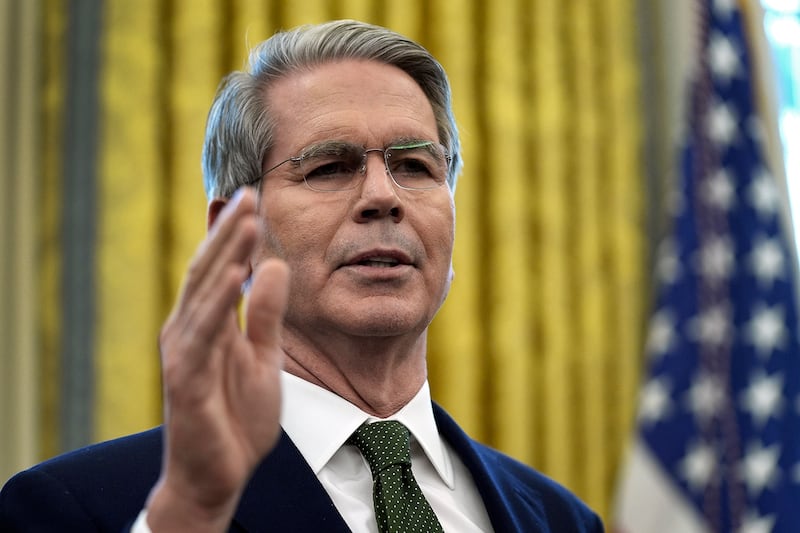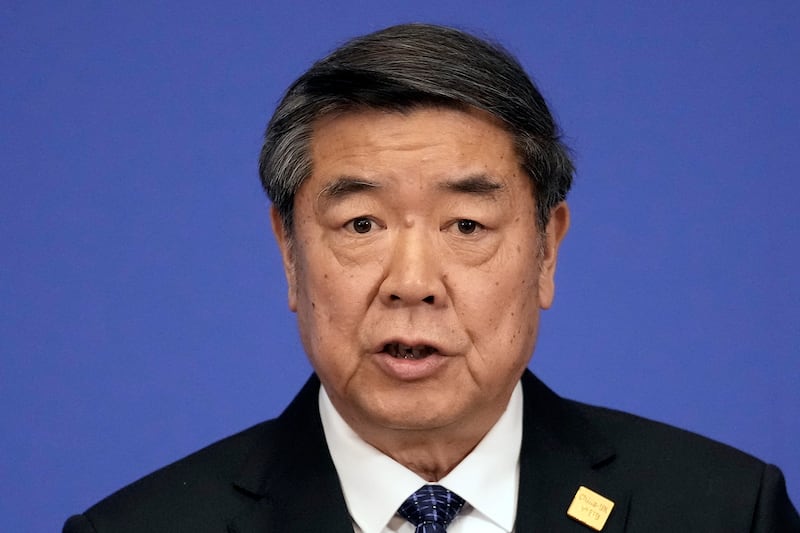U.S. and Chinese officials will hold high-level talks in Switzerland this weekend, a first step toward easing trade tensions between the world’s two largest economies over tariffs but experts did not expect immediate breakthroughs.
Analysts said Wednesday the talks were a necessary step towards de-escalating tensions amid the ongoing trade war, but negotiations to resolve differences between the two countries may be protracted.
U.S. Treasury Secretary Scott Bessent and Trade Representative Jamieson Greer will meet Chinese Vice Premier He Lifeng in Geneva, the first official engagement between the two countries since U.S. President Donald Trump increased tariffs on imports from China to as much as 145%.
“De-escalating won’t be simple. It’s much easier to ratchet up restrictions versus lifting them,” said Wendy Cutler, vice president of the Asia Society Policy Institute.
“Expectations should be modest for this meeting. It is a first step in a potentially longer process, which is complicated by a lack of trust and diametrically opposing views on how trade is conducted between the two largest economies,” Cutler told Radio Free Asia.
Chinese scholar Zhang Li agreed. He expects China and the U.S. to engage in protracted negotiations on a range of issues, including tariffs imposed by both nations, smuggling of the deadly synthetic opioid fentanyl into the U.S., and other trade imbalances.
“Such protracted negotiations may last throughout the entire term of the Trump administration, resulting in a continuous trade war between China and the U.S., which is also a feature of the new Cold War between China and the U.S.,” Zhang told RFA.

In 2024, China’s total manufacturing output reached 40.5 trillion yuan (US$5.65 trillion). Foreign trade volume - exports and imports - was 43.85 trillion yuan (US$6.1 trillion), of which exports accounted for 25.45 trillion yuan (US$3.49 trillion).
In March, Chinese imports to the U.S. were the lowest in five years, according to data released by the U.S. Commerce Department. U.S. trade deficit widened to a record $140.5 billion in the month, with imports from at least 10 countries, including Vietnam and Mexico, at record levels.
Trump – who on Wednesday held a swearing-in ceremony at the Oval Office for the new U.S. ambassador to China, David Perdue – said he was not open to lowering the 145% import duties on Chinese goods.
His comments came a day after Bessent, in an interview on Fox News, said the current tariffs imposed are unsustainable and that both sides had a “shared interest” in talks.
“We don’t want to decouple. What we want is fair trade,” Bessent said. He stressed that “de-escalation” will be the focus, instead of a “big trade deal.”

China on Wednesday said the U.S. has repeatedly indicated in the recent past that it wants to negotiate and that the upcoming meeting had been requested by the U.S.
“China firmly opposes the U.S.’s tariff hikes. This position remains unchanged,” Chinese Foreign Ministry Spokesperson Lin Jian said at a media briefing.
“Meanwhile, as we’ve stressed many times before, China is open to dialogue, but any dialogue must be based on equality, respect and mutual benefit,” Lin said.
Washington and Beijing have been engaged in a tit-for-tat increase in tariffs ever since Trump imposed a 10% tariff on China on Feb. 4, citing its role in the trade in fentanyl, a deadly opioid that has become a major cause of death in America.
China, in turn, hit back with a 15% tariff on U.S. coal and liquefied natural gas, and a 10% on crude oil, large cars, and agricultural machinery, prompting Trump to raise China tariffs further by 10% to a total 20%, followed by several more increases until eventually settling at 145%.
In China, the steep U.S. tariffs on Chinese goods have triggered a wave of factory closures in major export hubs in the country, with sources telling RFA that there is a prevailing sense of helplessness among the general public, given little consumer activity and a rise in protests by unpaid workers.
Edited by Tenzin Pema and Mat Pennington.



